Ipswich or St Tropez? - staycation secrets #1
Boutique waterfront hotels, scenery loved by our most famous artist and lavish historical treasures - Ipswich is much more than a line in a Monty Python sketch
Welcome to my first *staycation* issue! I’ll be sharing with you the details of a staycation I’ve taken somewhere in England, with the aim to tempt you to make a visit. This one has a lot going for it: lovely riverside & coastal scenery, a waterfront that, on a sunny day, could *almost* be mistaken for St Tropez, a fabulous modern boutique hotel, one of Britain’s most impressive Anglo-Saxon sites and the home of the artist John Constable. If you want to get more inspo for future staycations, why not subscribe? Or forward to a friend who needs a covid-secure getaway?
Before this trip, pretty much all I knew about Ipswich came from the Dead Parrot sketch:
John Cleese: Is this Bolton?
Pet shop owner: yes.
JC: You told me it was Ipswich.
Pet shop owner: it was a pun.
JC: A pun?
Pet shop owner: No, no, not a pun. What’s the other thing, that reads the same backwards as forwards?
JC: a palindrome?
Pet shop owner: Yeah, yeah.
JC: It’s not a palindrome. The palindrome of ‘Bolton’ would be ‘Notlob’. It don’t work.

The Old Custom House on Ipswich waterfront in the summer evening light.
Location: Ipswich, Suffolk
Accommodation & food: Salthouse Harbour Hotel, Ipswich
Sights: Sutton Hoo, Constable Country
Date of my visit: June 2019
We ended up in Ipswich sort of by chance. I had only been to Suffolk a couple of times before: mainly for dubious teenage weekends at Latitude Festival, at which I took in nothing beyond the coloured sheep. My brother invited us to the Peterhouse May Ball in Cambridge, and, now being OAPs, we decided we required a next day retreat. The ever-reliable Telegraph Travel turned up the recently refurbished Salt House Harbour Hotel on the waterfront at Ipswich, at just over an hour’s drive. And so it was decided.
Sunup on Saturday found us dancing to the ABBA tribute band in the college garden, champagne bottle in hand. We walked the high street in daylight back to our hotel. We slept a few hours, then bumped into my brother again, in Hot Numbers for bacon sandwiches.
Thus fortified, we commenced our drive. The clouds were fluffy and high, as were our spirits at having escaped lightly from the night before. I hadn’t realised Ipswich would be near the sea, but the land flattened and widened. And in a way it isn’t, really: the land bleeds into the water, river-mouths marshy and reedy, like a watercolour painting.
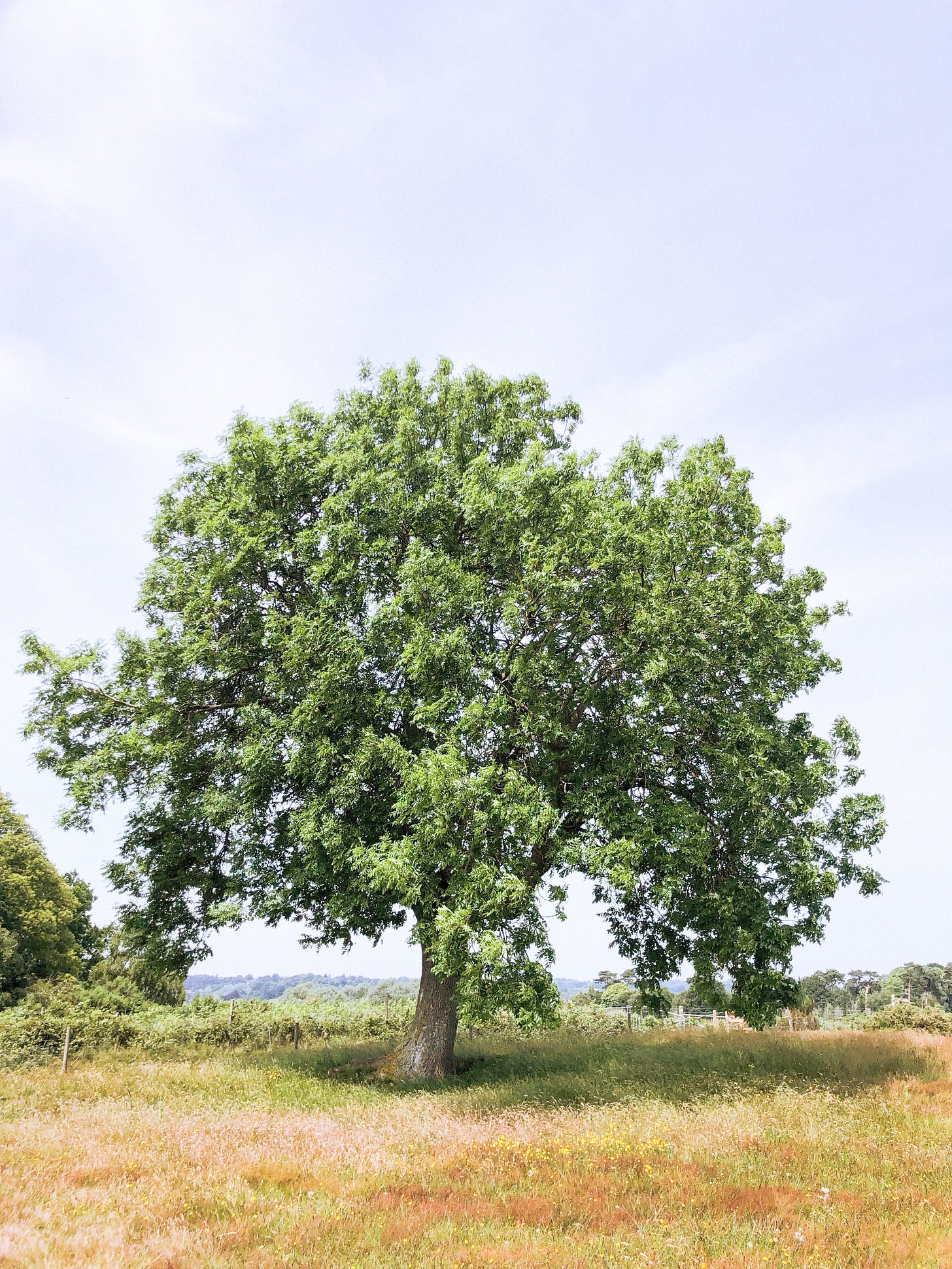
Tree at the lip of the hill on which stands the Anglo-Saxon cemetery of Sutton Hoo.
Sutton Hoo: burial of an Anglo-Saxon king
First stop on the way is Sutton Hoo. Giant Anglo-Saxon burial mounds crown the lip overhanging the River Deben. The largest contained a ship 27 metres long, in which is thought to have been buried King Raedwald of Anglia. We had to stop there when we realised it was on our way, the iconic image of the Sutton Hoo Helmet emblazoned on our childhood minds, probably because the National Trust acquired it in the nineties. It is home to two of only three ship burials in Britain. Most of the lavish artefacts buried with the King are in the British Museum, although there is now a new visitor centre containing many replicas.
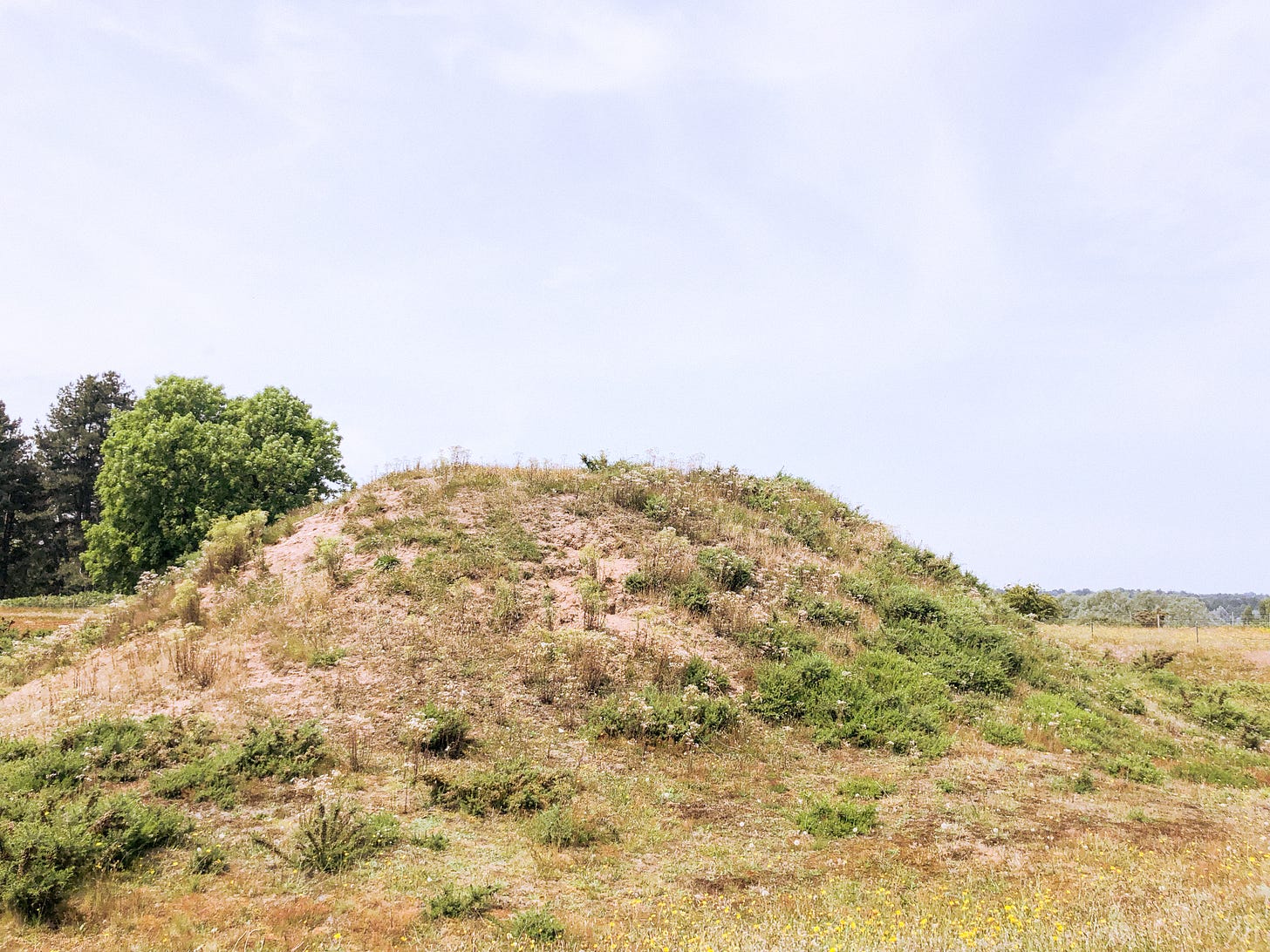
Mound Two at Sutton Hoo, reconstructed to its full height.
That was still being built on our visit, so we only got to see the mounds. But it was worth it purely for the atmosphere of this place. A giant skeletal sculpture of the ship sits near the entrance, and re-enactors in costume manned stalls in the field showing Anglo-Saxon trades — wood-carving and rope-spinning. Reaching the burial ground, several sinuous mounds rise from the turf: there are around 20 barrows here in all, surviving to a greater or lesser height. Mound One has been diminished by Tudor grave-robbers, but you still get a sense of its size: posts in the ground mark the length of the ship it contained. The king was encased in full armour along with mounds of treasures including weapons, a lyre, clasps and brooches, bowls and spoons, all in gold and precious metals and stones, from all over the world, and showing some of the finest workmanship of any artefacts uncovered in England.
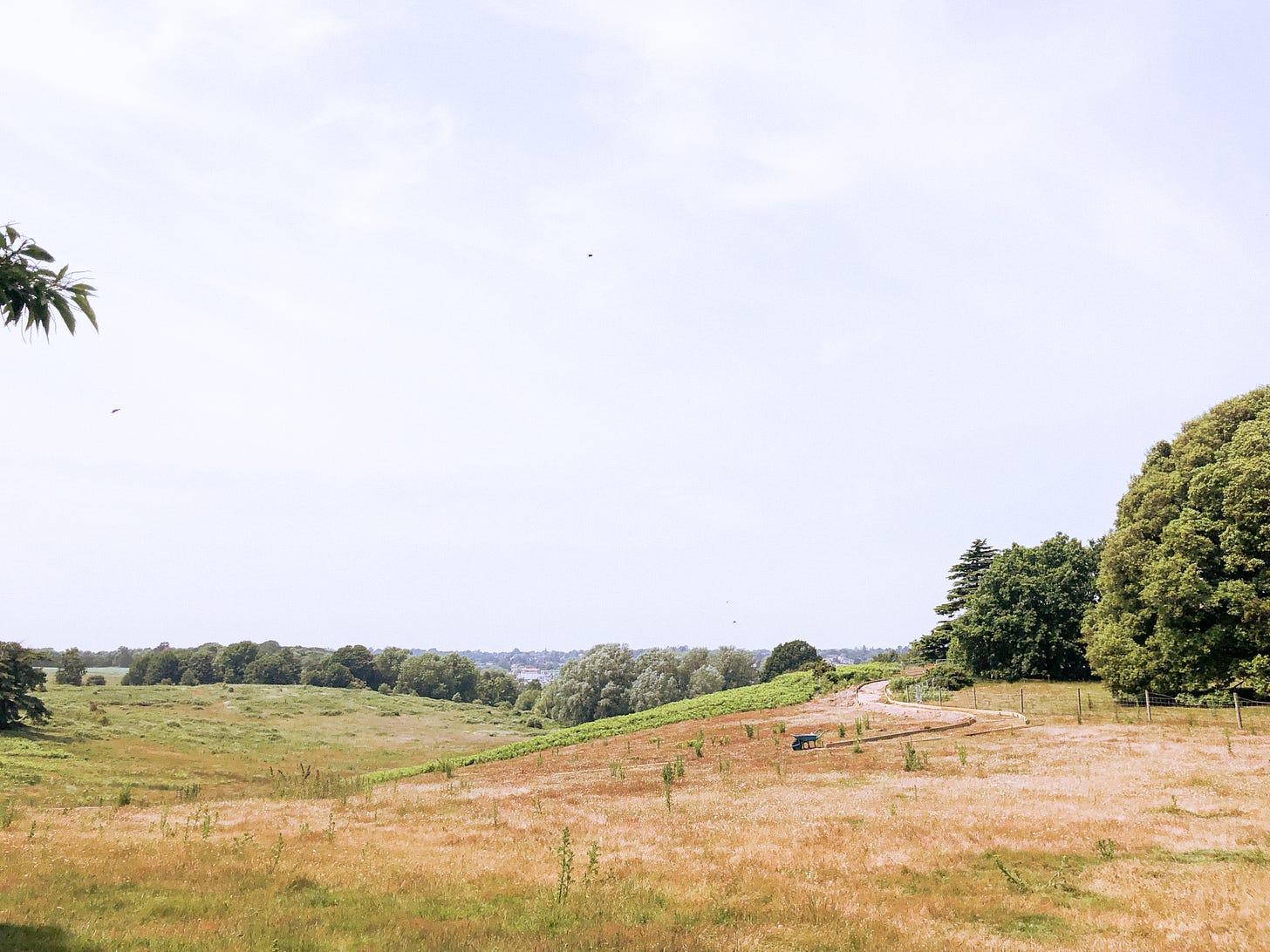
View at Sutton Hoo.
Next to it, Mound Two has been reconstructed to its full height. Striding to the lip of the hill, you can see the tidal sweep of the river: the mounds would have loomed high above the passing trade and traffic, a regular reminder of the King’s majesty.
The Salthouse Harbour Hotel: lovely modern boutique hotel on Ipswich waterfront
The town of Ipswich itself is inland: you can’t see the sea, apart from the bit of it that has seeped in through the mouth of the River Orwell to form the natural harbour, and it winds probably another ten miles or so before it meets the saltwater. At the mouth, where it meets its bigger, lazier cousin, the Stour, is the port of Harwich: where I travelled for a D of E cycling trip to Denmark as a teenager, wheeling our bicycles from the dock onto the ferry.
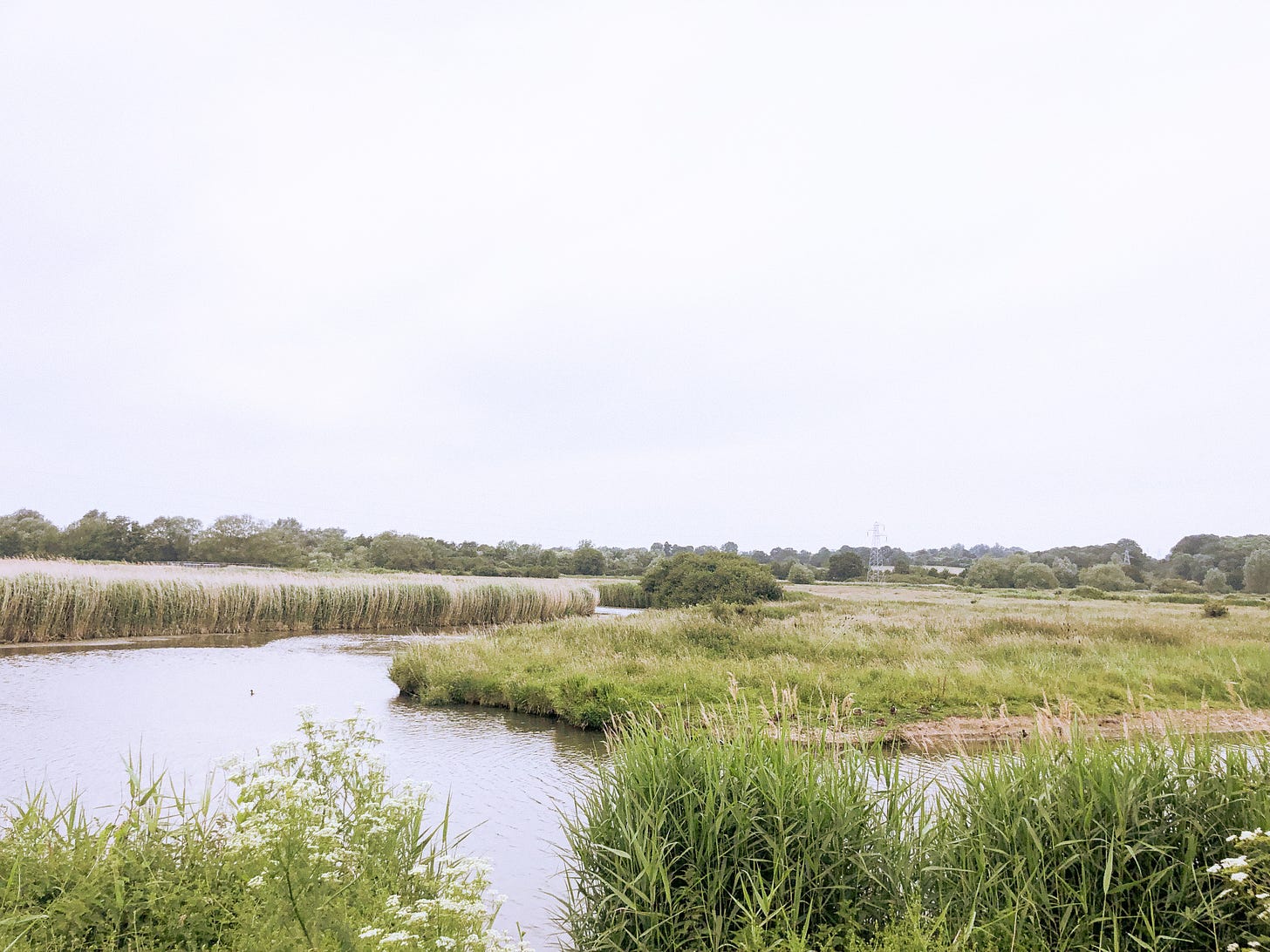
The River Stour winding through Dedham Vale.
As such Harwich always took on the air of a sort of magical place: an anonymous point of departure. I often have such romantic feelings about docks. As a child I would dream — and write, and draw pictures — of what I suppose I imagined would be sort of space-docks in the sky: I envisaged a world of islands floating in air, lit from behind by ever-changing colours, and airships would dock at each island’s harbour. I had a similar impression at the White Cliffs at Dover last year, when, on an exceptionally clear day, the sky was blue and cloudless and the sea was like glass, not a ruffle, so that the ships appeared to be doubled and floating towards the dock, suspended.
So all this is to say it was a surprise to me when we disembarked onto a harbourfront that felt, in the June sun, positively mediterranean: pavement cafes with people under umbrellas, sipping cocktails; heaving crowds in sashes, waving flags for Pride; everywhere people milling about enjoying themselves; and a giant new glass building of the University of Ipswich gleaming in the sunshine.
We checked into the Salt House Harbour Hotel, one such recently refurbished building on the charming strand. We immediately sank into a scorching bath, with a giant pot of tea from Room Service. After a delicious dinner of skate wing in the hotel restaurant — with excellent local fish and produce, and wine — we took a stroll along the now-quiet quay. We stopped in front of the Old Customs House, a fine redbrick building dating from 1844. It is a testament to Ipswich’s long trading heritage, which dates back to the 7th century. It even is claimed in some quarters to be ‘England’s Oldest Town’. Whether or not this is true, Gipeswic (as it was called in Saxon times) was a thriving centre of trade with areas around the North Sea, including Scandinavia and the Rhine. This trade flourished during Raedwald’s time, explaining why he was buried with so many lavish things.
‘Constable country’: home to one of the nation’s favourite artists, and many of his most famous scenes
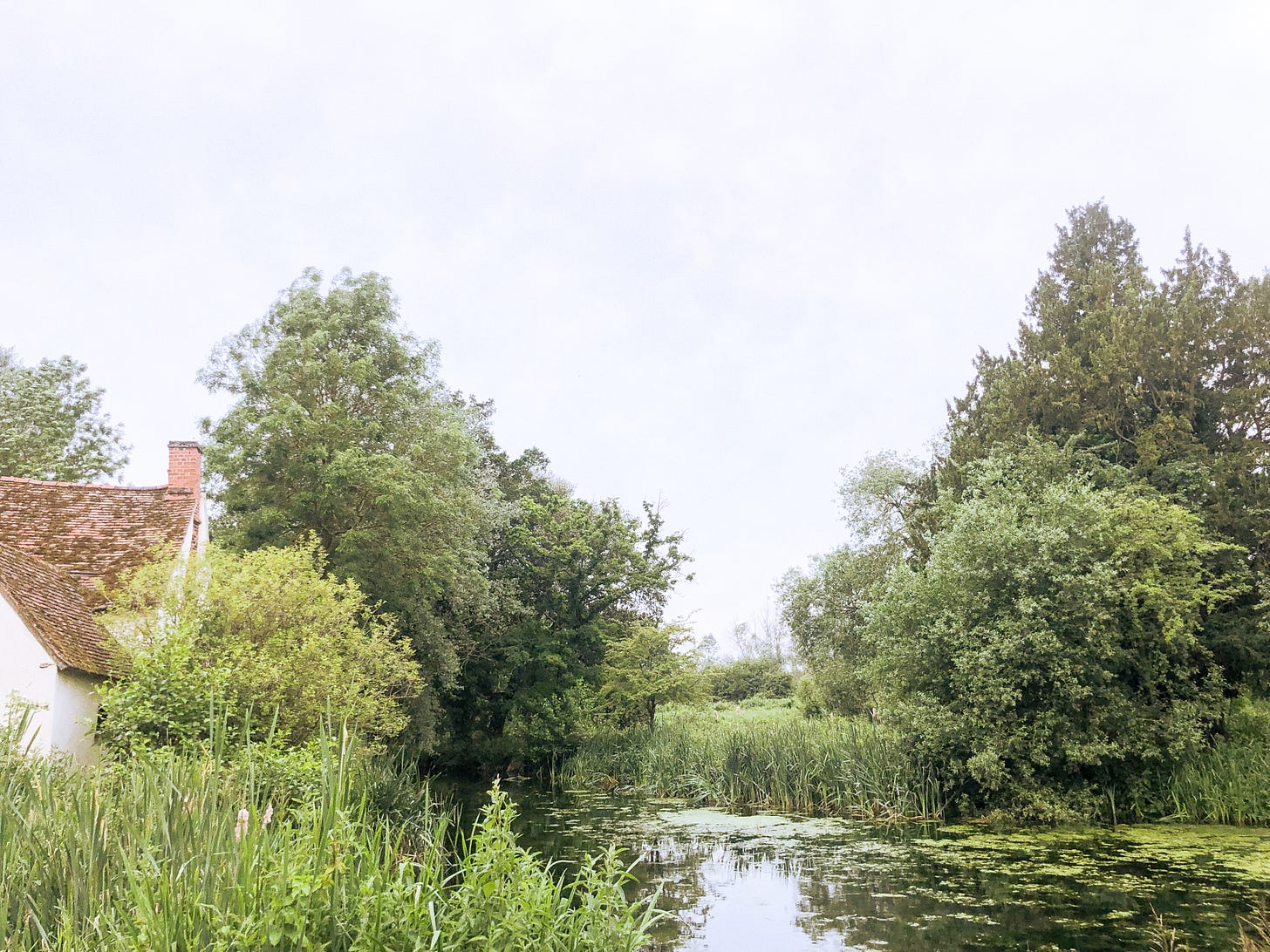
Flatford Mill, once owned by the Constable family and site of ‘the Hay Wain’ painting by John Constable.
This area also has more recent famous sons. On Sunday we head just over the border with Essex, to Manningtree, where we reach ‘Constable country’. There are some artists that have such a relationship to a place that it’s impossible not to see it through their eyes: like Cezanne and the Provençal countryside. The same is true of the Stour valley and John Constable. Even the weather is the same: those high wind-buffed clouds, the poplars, darkened and raggedy, the tangled weeds and watery flats reflecting the pale light.
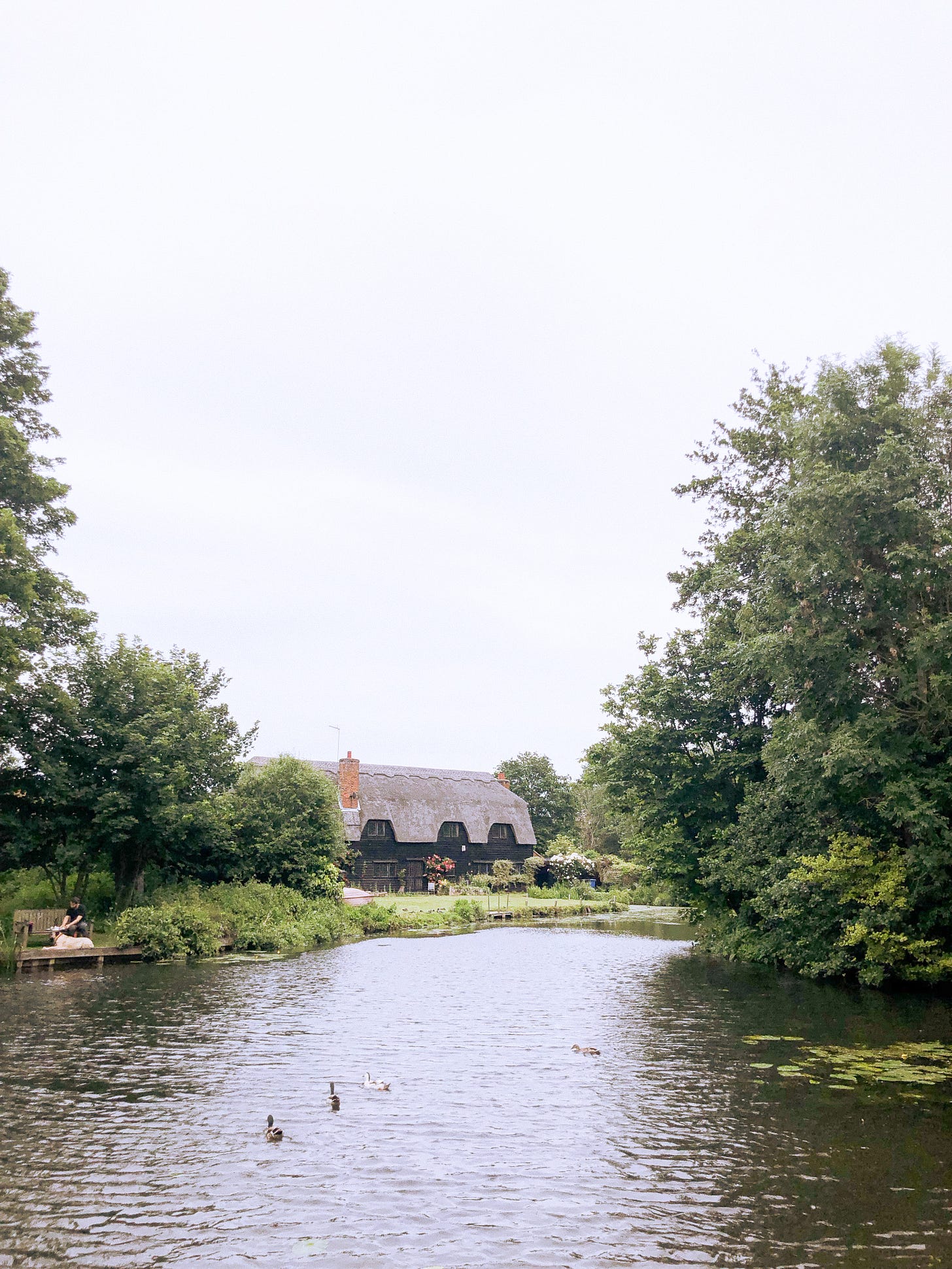
The cottage of Willy Lott, a friend of Constable.
The valley lies wide and flat: hills, barely perceptible, rising each side. The river flows fast and hard, the colour of Coca-cola, among the water meadows and the velvety grass. The National Trust have set out a lovely walk to Flatford Mill, which the Constable family owned. He was born in East Bergholt, a nearby village, in 1776, and made many paintings of the area. You can walk from the cottage, now home to a cafe with excellent scones, up the road to the Mill: the famous Hay Wain painting depicts a cart fording its pond. They’ve let the trees grow, so you can’t see the valley beyond: but you still feel like you’re in the painting, in the landscape that he created.
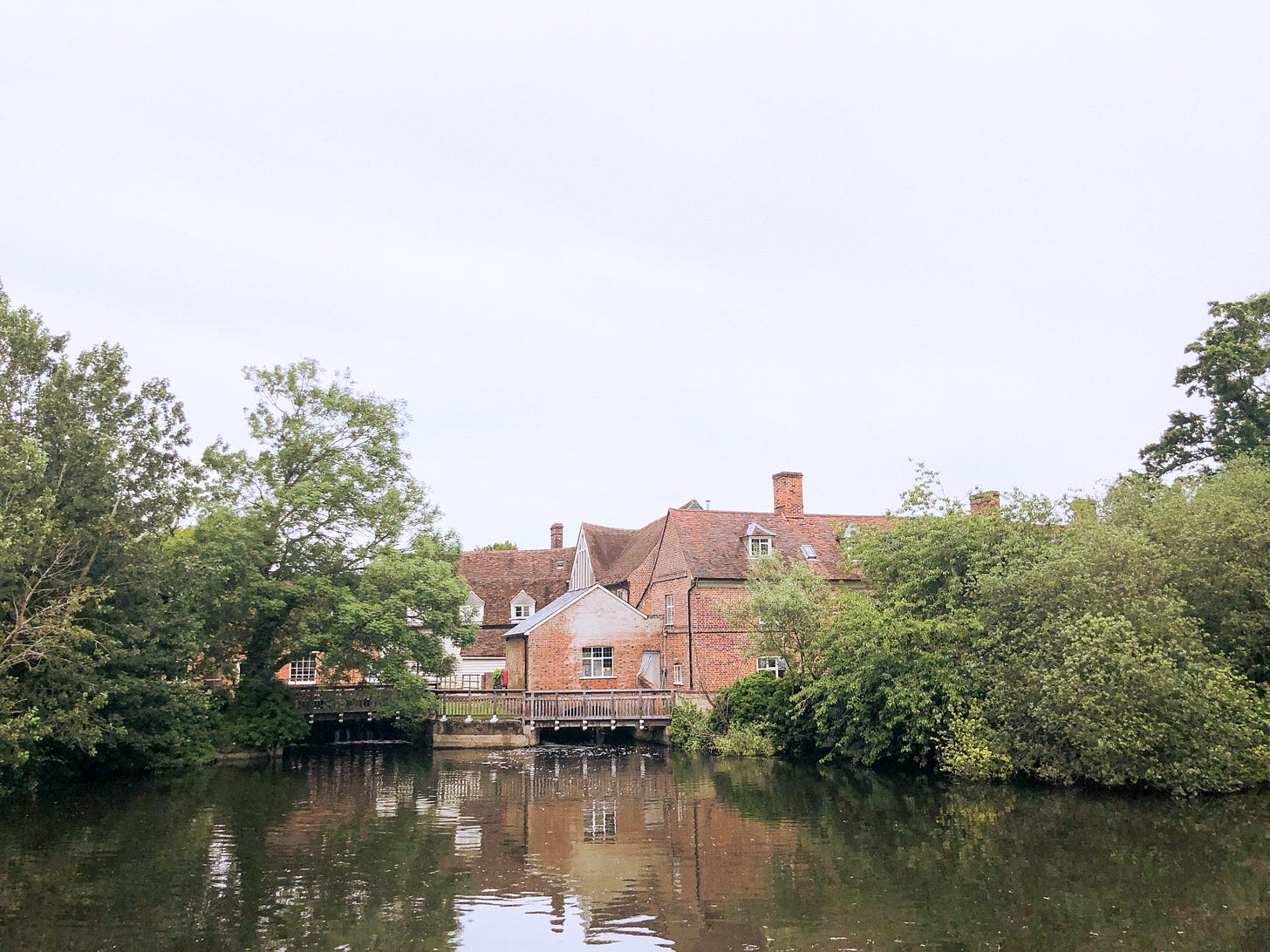
Looking back towards Flatford Mill.
I hope you enjoyed this new format showcasing an English getaway — I’d love to know what you think and feedback on anything else you’d like to see!
Where have your great UK staycations been recently? Let me know in the comments!
Did you enjoy this post? If so, I’d really appreciate if you’d consider sharing it more widely! You can reach me on Twitter: I’d love to hear from you.
If you enjoyed reading, please consider subscribing, or sharing this newsletter with a friend.
Sincerely,
Ruth


